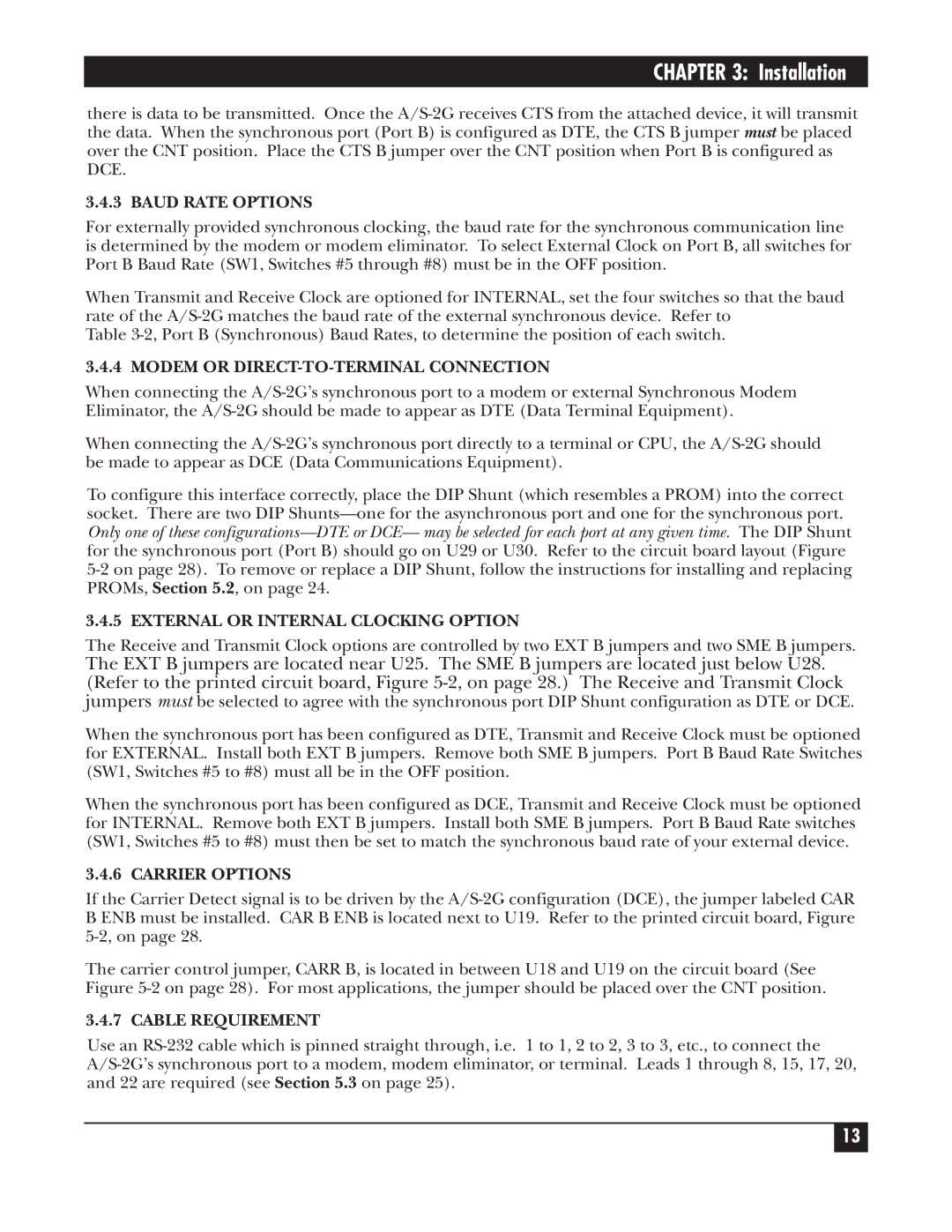
CHAPTER 3: Installation
there is data to be transmitted. Once the
3.4.3 BAUD RATE OPTIONS
For externally provided synchronous clocking, the baud rate for the synchronous communication line is determined by the modem or modem eliminator. To select External Clock on Port B, all switches for Port B Baud Rate (SW1, Switches #5 through #8) must be in the OFF position.
When Transmit and Receive Clock are optioned for INTERNAL, set the four switches so that the baud rate of the
Table
3.4.4 MODEM OR DIRECT-TO-TERMINAL CONNECTION
When connecting the
When connecting the
To configure this interface correctly, place the DIP Shunt (which resembles a PROM) into the correct socket. There are two DIP
3.4.5 EXTERNAL OR INTERNAL CLOCKING OPTION
The Receive and Transmit Clock options are controlled by two EXT B jumpers and two SME B jumpers.
The EXT B jumpers are located near U25. The SME B jumpers are located just below U28. (Refer to the printed circuit board, Figure
When the synchronous port has been configured as DTE, Transmit and Receive Clock must be optioned for EXTERNAL. Install both EXT B jumpers. Remove both SME B jumpers. Port B Baud Rate Switches (SW1, Switches #5 to #8) must all be in the OFF position.
When the synchronous port has been configured as DCE, Transmit and Receive Clock must be optioned for INTERNAL. Remove both EXT B jumpers. Install both SME B jumpers. Port B Baud Rate switches (SW1, Switches #5 to #8) must then be set to match the synchronous baud rate of your external device.
3.4.6 CARRIER OPTIONS
If the Carrier Detect signal is to be driven by the
The carrier control jumper, CARR B, is located in between U18 and U19 on the circuit board (See Figure
3.4.7 CABLE REQUIREMENT
Use an
13
